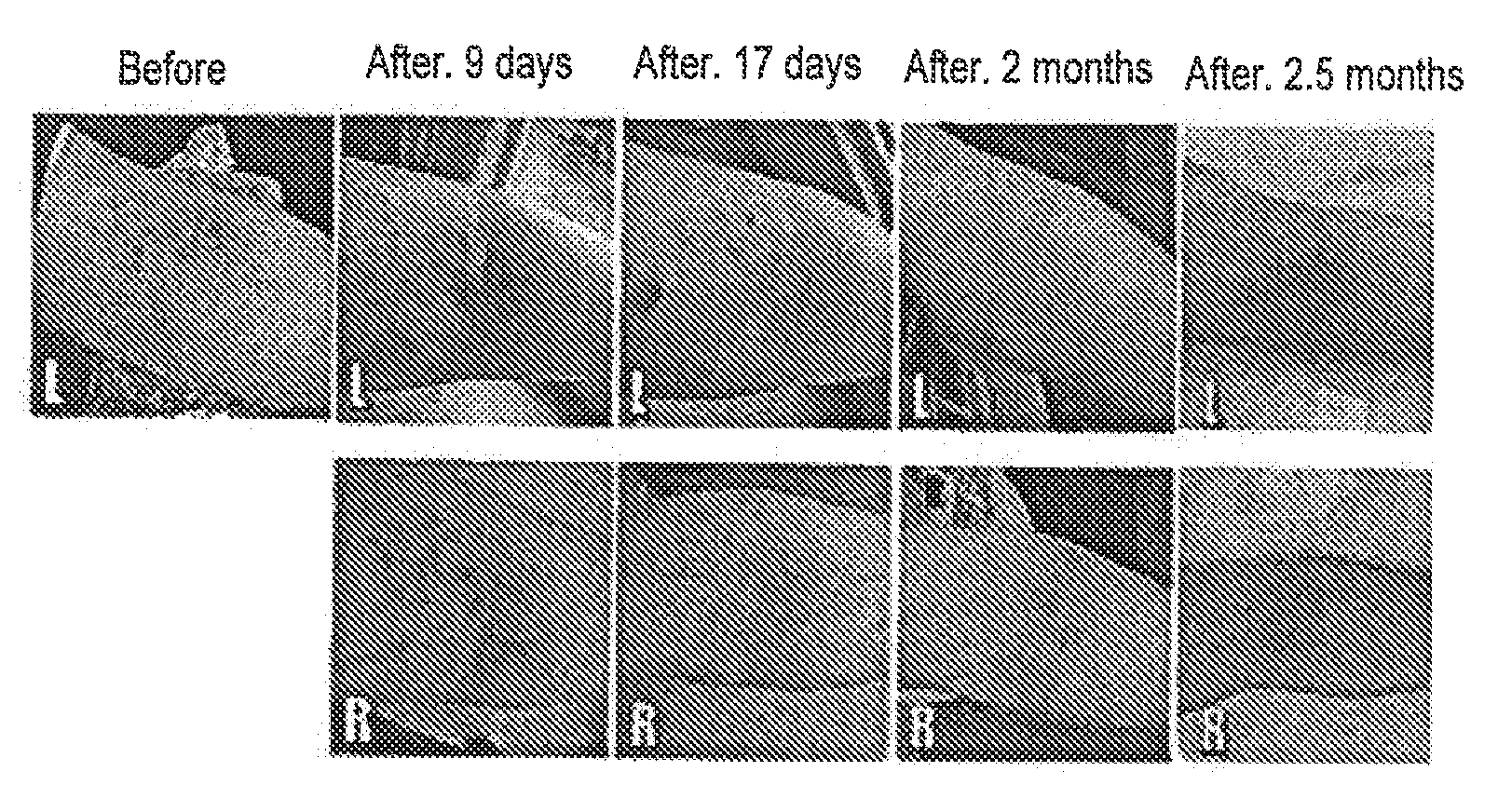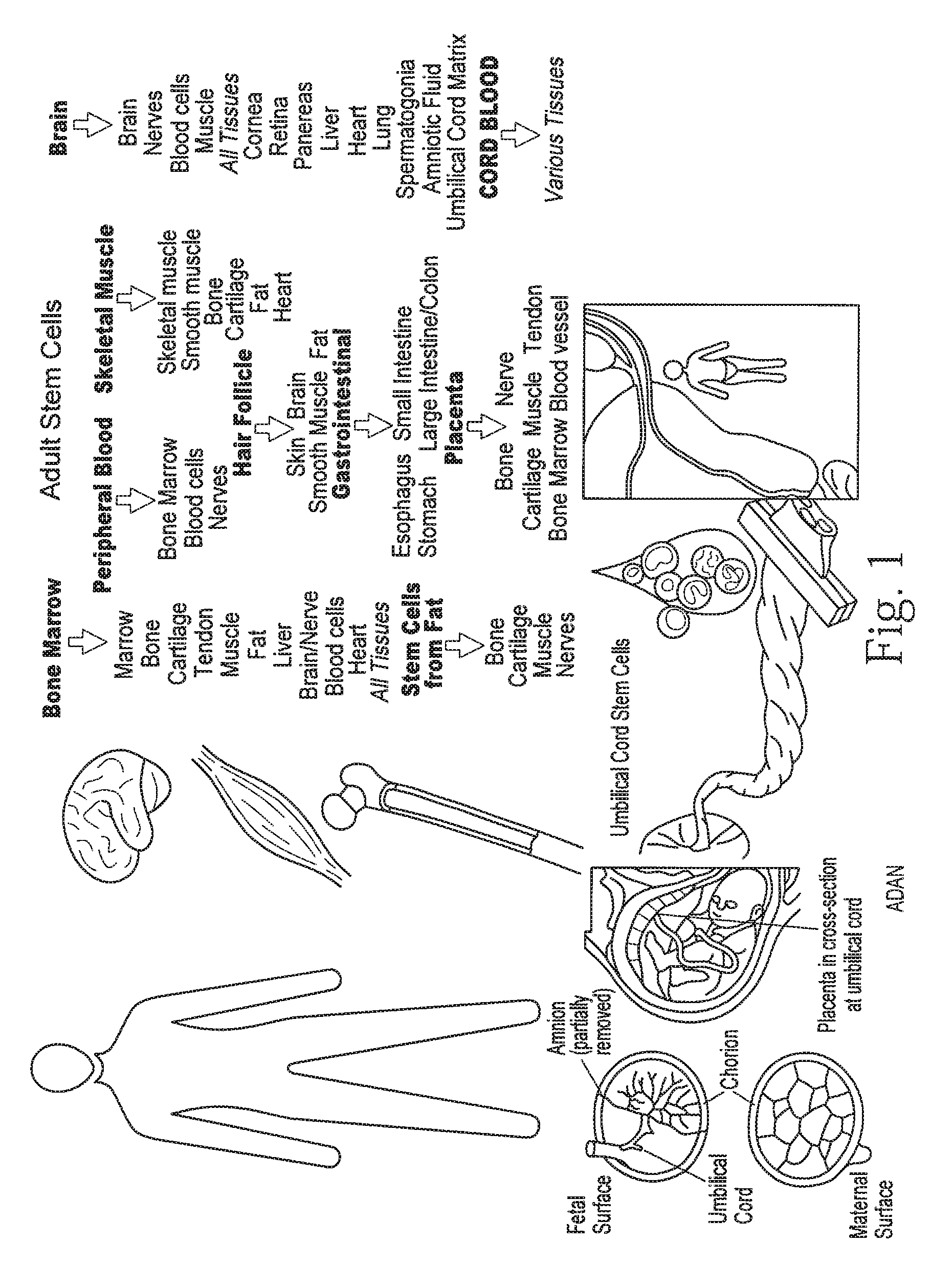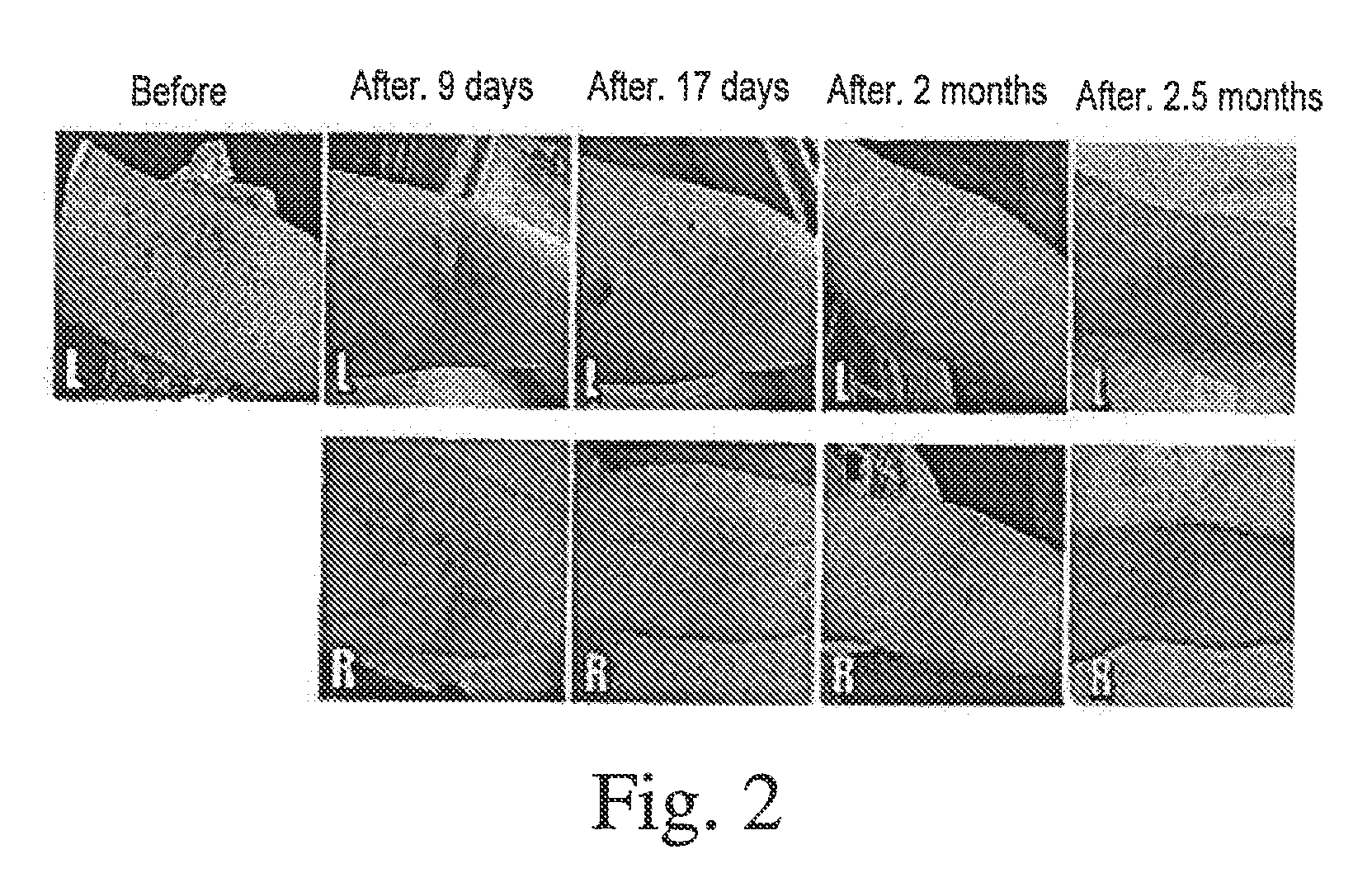Methods of treating diseases or conditions using mesenchymal stem cells
a stem cell and mesenchymal technology, applied in the field of stem cells and regenerative medicine, can solve the problems of difficult to maintain isolated stem cells in vitro, difficult to culture in the absence of specifically screened media, etc., and achieve the effect of treating or preventing autoimmune hearing loss and preventing hearing loss
- Summary
- Abstract
- Description
- Claims
- Application Information
AI Technical Summary
Benefits of technology
Problems solved by technology
Method used
Image
Examples
example 1
[0071]Isolation of human mesenchymal stem cells from adipose tissue. Human adipose tissues were obtained by simple liposuction from the abdominal subcutaneous fat of donor. The subcutaneous adipose tissues were digested with 4 ml RTase (RNLBIO, SEOUL, KOREA) per 1 g fat under gentle agitation for 60 min at 37 degrees Celcius (or 1 mg / ml collagenase type I (Gibco, Carlsbad, Calif.) under gentle agitation for 60 min at 37° C.). Next, the digested tissues were filtered through a 100 μm nylon sieve to remove cellular debris and centrifuged at 1500 rpm for 5 min to obtain a pellet. The pellet was resuspended in RCME (RNLBIO, SEOUL, KOREA) containing 10% fetal bovine serum (FBS). The cell suspension was re-centrifuged at 1500 rpm for 5 min. The supernatant was discarded and the cell pellet was collected. The cell fraction was cultured overnight at 37 degrees Celcius / 5% CO2 in RCME containing 10% FBS. The adhesion of cells was checked under an inverted microscope the next day. After 24 h, ...
example 2
[0072]Restoration of hearing loss using mesenchymal stem cells. A 19 year-old female with total loss of hearing in her left ear and right ear hearing loss (80 ndb) (tube in the tympanic membrane) was intravenously administered (in the arm) autologous mesenchymal stem cells derived from adipose tissue. 200 million cells were administered in one administration, followed by two additional treatments (of 200 million cells each) in one week intervals. The second and third intravenous administrations were also accompanied by 4-10 million cell infusions through the tube in the tympanic membrane. An additional 5 million cells were administered into the right middle ear or inner ear following the last intravenous treatment. The treatment restored 75% of hearing from the right ear.
example 3
[0073]Treatment of Hashimoto's thyroiditis using mesenchymal stem cells. A 38 year old Asian female patient diagnosed with Hashimoto's thyroiditis and angioedema and urticaria with high antithyroglobulin antibody levels of 343 U / ml was treated. Before treatment, she was on steroid and antihistamine medication. She was intravenously administered (in the arm) 100 million autologous mesenchymal stem cells derived from adipose tissue in one administration. The disease subsided following the single administration. She never had another attack of angioedema and the antibody level declined. Following the first administration, 200 million cells were administered in a second administration. One week later, 200 million cells were administered in a third administration and an additional 200 million cells were administered in a fourth administration one week later. The treatment resulted in decreased antibody levels and cytokines associated with disease. (T3: WNL (within the normal limit); T4: ...
PUM
 Login to View More
Login to View More Abstract
Description
Claims
Application Information
 Login to View More
Login to View More - R&D
- Intellectual Property
- Life Sciences
- Materials
- Tech Scout
- Unparalleled Data Quality
- Higher Quality Content
- 60% Fewer Hallucinations
Browse by: Latest US Patents, China's latest patents, Technical Efficacy Thesaurus, Application Domain, Technology Topic, Popular Technical Reports.
© 2025 PatSnap. All rights reserved.Legal|Privacy policy|Modern Slavery Act Transparency Statement|Sitemap|About US| Contact US: help@patsnap.com



